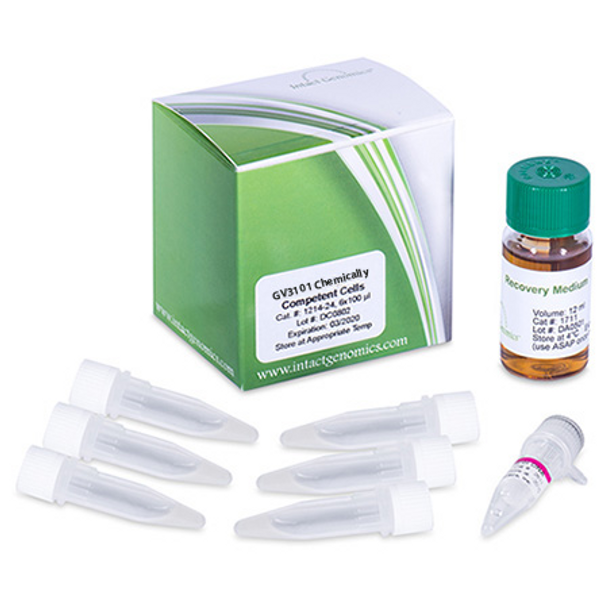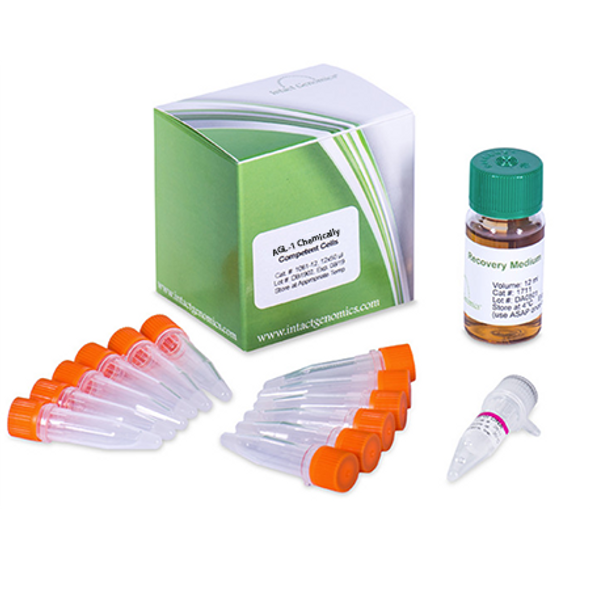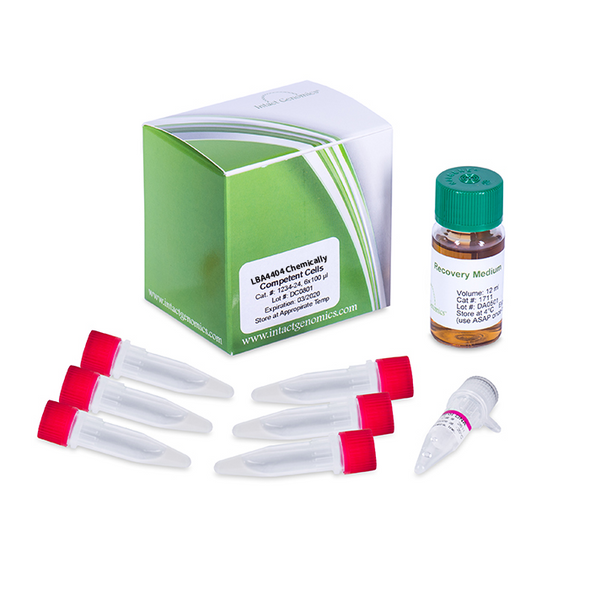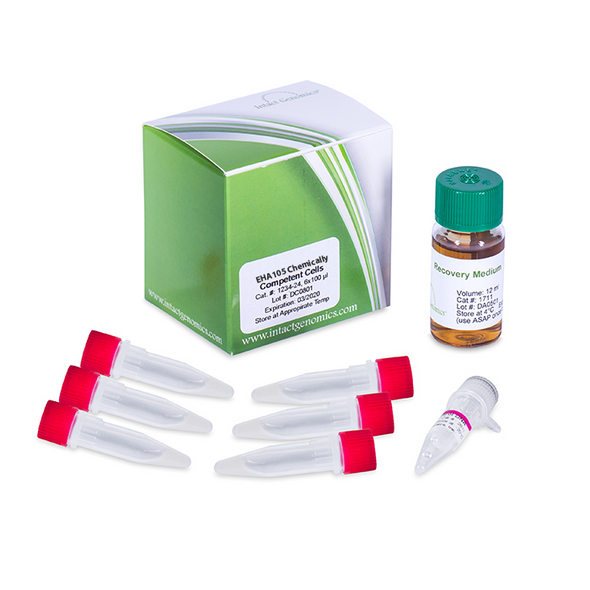Description
GV3101 Chemically Competent Agrobacterium are Useful for Agrobacterium-mediated genetic transformation of Arabidopsis thaliana, tobacco, corn, potato, and other plants.
Description
Intact Genomics GV3101 Chemically Competent Agrobacterium cells are optimized for the highest transformation efficiencies which is ideal for applications requiring high transformation efficiencies, such as with cDNA or gDNA library construction. The GV3101 strain has a C58 chromosomal background with rifampicin resistance and the Ti plasmid pMP90 (pTiC58DT-DNA) with gentamicin resistance. The GV3101 Ti plasmid has the T-DNA region sequences deleted and transformation with a binary vector containing the missing T-region results in a functional T-DNA binary system that allows for transfer of genetic material into a host plant’s genome. Therefore, this system is often used for Agrobacterium-mediated transformation of several dicots such as Arabidopsis thaliana, tobacco, potato, and monocots like corn.
Specifications
Competent cell type: Chemically Competent
Species: A. tumefaciens
Strain: GV3101
Format: Tubes
Transformation efficiency: ≥ 1 x 105 cfu/µg pCAMBIA1391z DNA
Blue/white screening: No
Shipping condition: Dry ice
Reagents Included
- GV3101 Chemically Competent Agrobacterium
- DNA (pCAMBIA1391z, 500 pg/µl)
- Recovery medium
Note: Liquid nitrogen is required.
Storage
GV3101 Chemically Competent Agrobacterium: -80 ºC
pCAMBIA1391z control DNA: -20 ºC
Recovery medium: 4 ºC
Quality Control
Transformation efficiency is tested by using the pCAMBIA1391z control DNA supplied with the kit and using the protocol in this manual. Transformation efficiency should be ≥1 x 105 CFU/µg pCAMBIA1391z DNA. Untransformed cells are tested for appropriate antibiotic sensitivity.
General Guidelines
Follow these guidelines when using GV3101 Chemically Competent Agrobacterium cells:
- Handle competent cells gently as they are highly sensitive to changes in temperature or mechanical lysis caused by pipetting.
- Thaw competent cells on ice, and transform cells immediately following thawing. After adding DNA, mix by tapping the tube gently. Do not mix cells by pipetting or vortexing.
Calculation of Transformation Efficiency
Transformation Efficiency (TE) is defined as the number of colony forming units (cfu) produced by transforming 1µg of plasmid into a given volume of competent cells.
TE = Colonies/µg/Plated
Transform 1 µl of (500 pg/µl) pCAMBIA1391z control plasmid into 50 µl of cells, add 950 µl of Recovery Medium. Recover for 3 hours and plate 100 µl. Count the colonies on the plate in two days. If you count 5 colonies, the TE is calculated as follows:
Colonies = 5
µg of DNA = 0.0005
Dilution = 100/1000 = 0.1
TE = 5/.0005/.1 = 1×105
Please note, all agrobacterial strains are not well studied for antibiotic resistance and there are many agrobacterial strains. Therefore, it is the customer’s responsibility to make sure his/her vectors are compatible with the Agrobacterial strains if he/she uses an alternate antibiotic selection than kanamycin-selection.1082-06 1082-18






